By Ross MacBeath
Loch Chon infrastructure
Driving along the B829 where trees are coming into full boom after the recent rain, the greater area of natural woodlands has greened up with mosses and other vegetation moving into their main growing season. Nowhere is this more obvious that at the Loch Chon site where easy access to the ancient woodland has been opened up with the campsite paths. Here nature is fighting back after the trauma of machinery driving unchecked over the hillside (see here) but even she can’t erase the scar of sterile (perhaps treated) forest bark at the approach to almost every camping pitch in the site. An act of wanton environmental damage inflicted for no good reason in this sensitive eco-system.
On arriving at the gate, happy to see it open after previous experiences, we were met with an unfinished road surface. At least I hope it’s unfinished with it’s uneven potholed surface, strewn with loose hardcore.
Expectations dashed by first impressions
The good news is the bin store is complete, the bad news is its a 2.7 metre high structure which dominates the vista. It doesn’t even have a maze to hide the 6 or so bins now in place, remaining in full view from the car park opposite. This is bin overkill, even if the Park’s projected 90% occupancy of the campsite should ever prove to be true, its too high, and an unnecessary intrusion in this natural setting.

It would have made so much more sense to position the bins beside the toilets (rather than the office), where they would be more convenient for campsite users, but campers have never been a priority in this development.
Perhaps it’s more important for the refuse collectors to save the additional few hundred metres drive than to hide this monstrosity out of the way. It’s a disastrous first impression of the site and is not what was discussed at preliminary meetings with the local community.
The bin store is not on the plans – a Breach of Planning Consent?
Following the granting of planning permission, National Park planning staff granted a Non Material Variation to the plans. Neither the original plans or the letter mention a bin store or any other structure at this location – the document NMV decision letter final refers.
The ‘S’ on the plan indicates the location of the Ranger Base/Store container.
Well there you have it. The National Park Authority have breached their own planning consent while as the Planning Authority, they have so far failed to any take enforcement action. In fact I have found out that the Planning Authority have not even made a compliance check on this planning application. A surprising oversight for a £350k plus project which is a sensitive development in ancient woodland.
It seems the Park Authority also grant themselves special dispensation when it comes to planning compliance.
Containers! Plunging our National Parks into mediocrity
Next door to the bins, the Ranger Base as it is affectionately known, is just a container or, more correctly 1/2 a container, the other 1/2 being a store for fire pits, wood and other sundries. Currently it also serves as the main drinking water supply cupboard, more of which shortly.
Nevertheless the Ranger Base is a home from home and surely much appreciated by the overworked rangers traveling in from afar. What with all their new enforcement duties it must give them time to reflect on what being a Ranger is really about. It’s reminiscent of a sales office at a housing development, probably because that’s what it was. The Park really should give priority to toning down the white wall and the clinical door – its as if the National Park Board, whose members apparently visited the site, have decided that rural charm has no longer any place in our National Parks.
The container shows it’s true nature and it’s not natural – Fail
The last memory of your camping experience as you leave this site is this view of the office (below), a shipping container more at home in Tilbury docks, than a sympathetic camping development. It’s another one in the eye for the National Park’s Marketing Department.
It’s another breach in planning consent – Fail
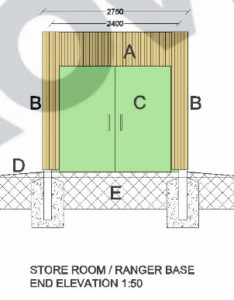
This end elevation in the photo above is very different to the elevation shown in the engineering drawings for this container contained in the plans. It did seem odd at the time the planning department allowed a drawing to be approved on their system that showed only one end elevation, not both, a very unusual situation. What was not shown is what we see here, a considerably larger and obtrusive industrialised door. The more cynical among us could be forgiven for believing this omission from the plans was not accidental.
Other apparent breaches of the planning consent in respect of the containers include: the construction method of the cladding, which is not mounted as shown in the plans; the omission of the concrete embedded posts from all containers on the site; and the hardcore which has not been graded to form a rise in ground to door level.
Site uncompleted – Fail
What is wrong with the Park Authority? It would seem they lack the commitment to finish anything to do with this project and it is the local community and park users that have to put up with the mediocre result.
Why are the logs in the image above still lying on site, they interfere with the vegetation regrowth and will result in another bare patch when removed? If they must be stored, do it on hard standing, better still in the Forestry Commission car park along the road.
Many of the pitches remain unusable, or just too small with slope remaining a problem as does wet or rough ground.
Talking of bare patches it would seem that reseeding work with the specified seed mix has not taken place, this should have been completed before the start of the growing season and should be carried out immediately to provide effective restoration in this season.
The use of containers sets a low tone for the whole development – Fail
The design of this development is just not in keeping with the ethos of National Parks. The LLTNPA really should take a leaf out of the Forestry Commission’s book when it comes to designing quality facilities.
Toilets
Compare the toilet block in Forest Drive which, when you see it, looks right to the abysmal containers at Loch Chon which have poor visual appeal and lower the tone of an otherwise beautiful woodland setting. It’s depressing to see Scottish Tourism dragged down on the world stage.
| Forestry Commission – Shelter & Charm | LLTNPA – Containers, no shelter no charm |
The Forestry Commission’s rustic solution to toilet blocks, shown on the left hand image was the preferred style choice at Strathard community meetings and what most people would wish to see in our National Park, in stark contrast to the “industrial” containers the Park Authority favours. It’s time the Park Authority started listening to its Partners instead of running roughshod over them.
The Park Authority’s choice shows a lack of commitment to the success of this project. The temporary nature of the installation means it can be moved to another site if required, or taken away in the winter, a fact alluded to at the community consultations by Gordon Watson their Chief Executive. This has been given precedence over all other design requirements with dire consequences.
The toilet blocks are containers like the ranger station, with high security metal doors to each “cell” opening in direct view of the car park opposite, offering no privacy to users. This is surely a breach of regulations.
No shelter for toilets queues in wet and windy weather – Fail
Then the Park Authority’s failure to provide anything in the way of shelter is a serious design fault. No consideration has been given to the needs of visitors who find themselves caught in the rain when all toilets are occupied, with nowhere to take cover. Getting soaked to the skin is difficult to recover from when camping and should be avoided. At very least a canopy should have been provided across a widened gap between the two containers but of course what was really required was some forethought and a custom designed visitor toilet block with some visitor friendly features instead of this minimalist offering.
One camper remarked in its defence, “it’s not too bad” and that sums up the aspirations of the current National Park Board for new developments, “Not too Bad”. Sadly at this site, they’re often failing to achieve even that.
Dark Skies a Project to which the Park Authority just pays lip service – Fail
The inappropriate plastic bulkhead light fittings have been chosen with no consideration of the specification laid out in International Dark-Sky Association guidelines that the National Park claim to be promoting (see here). The Park Authority are failing to make capital of this ideal site located away from any light pollution except for that of their own making.
Since the toilet block image (above) was taken, the fittings have been recessed into the wood cladding but still fail to comply with the dark skies requirement. Light fittings should shade upward light emissions while other light output should be directed downwards by internal reflectors not flooding the hill side opposite and sky as is the case here.
Water Supply
The National Parks Chief Chief Executive Gordon Watson continues to preside over the issuing of false information in connection with the availability of drinking water at Loch Chon and the completion status of the site.
This statement is currently posted on the LLTNP blog By Gordon Watson on
(see here under the section “Teething Issues”)
“Teething issues
Of course, with any new system or facility there will always be snagging issues. At our new Loch Chon campsite, the running water was unavailable for a few days after opening due to a temporary problem with the new connection. We immediately put in place contingency plans for anyone still wishing to camp so that they still had water and toilets at all times. The connection problem was fixed and the hot and cold water is up and running”
Then he assures us further down the post
“The most important thing is that we are responding quickly to any issues that arise and despite these snags”
Clearly the National Park Authority are failing to correct issues in good time.
Bottled water for drinking and dish washing? – Water supply faulty – Fail.
The National Park Authority first of all claimed the water supply had been working with just a short period out of action, but evidence collected on our many visits show that to be 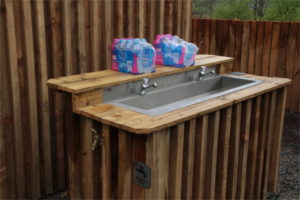 untrue.
untrue.
The Park have now changed their story to say the contractor provided an external water supply during the period since opening. On the 6 occasions I have personally visited since the site opened, on 4 visits there was no drinking water and on 3 no water in the toilets. On another two occasions where a a local resident attended, there was no drinking water. In total this represents 2 months without a contractor supply and 6 weeks without drinking water.
Incredibly on my 6th visit water was being supplied in plastic bottles – which raises the question once more, why? (see here for recent history of the water issue)
In any case to recap on the real problem, With a reported £100,000 spend, even before planning consent, the hydrology of the stream they chose to use as the water supply should have been monitored over the previous year’s cycle to identify any periods where the stream levels were low or dried up before selecting it as a source. The question needs to asked why would the planning department grant permission for a campsite without a guaranteed water supply? It’s beyond comprehension. In fact when you look at the plans, there is no detail of the water intake design or specification for the size of the header tank, reservoir or pool that would be a requirement for a successful water supply. The upshot has been there is only a trickle of water in the stream in dry spells which goes a long way to explaining the intermittent nature of water supply.
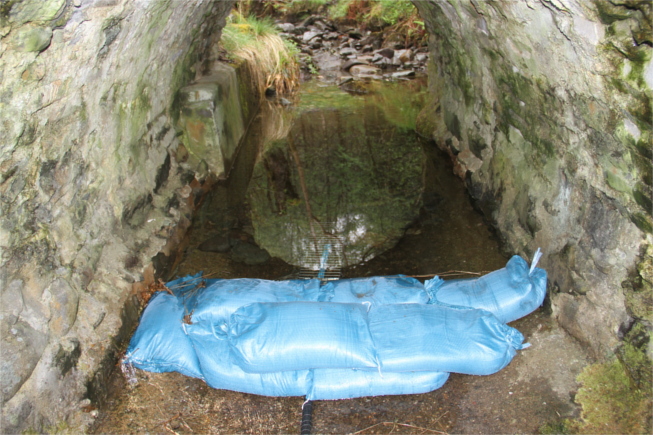
After each visit I have made, I have pointed out the short comings to the Park who have then modified the installation to mitigate each issue but as of yet have failed to take on board what is required to be done. After the dry spell at the beginning of May 2017, the water level dropped so low air could be drawn into the intake pipe. The Park has responded by creating a slightly more substantial dam using sandbags instead of the the pebbles and rocks of the last one. This is getting them through by the skin of their teeth, providing unfiltered water for the toilets and wash hand basins but has not provided the solution to the drinking water problem.
I think SEPA should have something to say about interfering with culverts in this way.
Intake pipe without strainer – Fail
The intake pipe remains open to the flow of water which poses serious risks for debris to enter the system with potential for blockages (see Solution here).
The sandbag issue aside, the problem with the water supply is even more serious, it’s a design fault which the Park Authority have been aware of from before the 1st March 2017 but for reasons known only to them have failed to correct. The problem is simple, the intake pipe being below the bridge is effectively underground and the level between the intake and outlet at the taps is too small for water to flow as this diagram explains.
The solution is equally simple, assuming everything else is equal and no damage has been done to the plant through running it without a water feed. Raise the intake pipe level by moving it higher. There is a natural reservoir just upstream at the base of a waterfall, in the form of a pool which provides a natural header tank, something that’s required for all such installations to ensure as continuous supply. They could of courses go one better and take the feed from above the waterfall giving even more gain in elevation and therefore water pressure. Campers will just have to wait with baited breath and struggle without effective dish washing using instead 330 ml bottles of water to somehow fill the massive trough of a sink. With no reliable water supply for over three months, questions need to be asked what are the Park Board going to do about it and why have the planning department not enforced this requirement? What other campsites are allowed to operate without running water?
Drawings missing from the Planning Portal
Inexplicably a header tank was never a feature of the Park Authorities design. In fact there is no design for any water supply intake. There was a reference to the intake location on a previously available drawing which has been removed from the remaining document set (18 documents) on their planning portal, another instance of lack of transparency in this project and indeed with many other Park projects.
A new screening fence has been fitted behind the toilets – success!
The protruding tops of sewerage works and other toilet related plumbing is now screened from view hiding the surface installation of inspections chambers which should have been hidden below ground in the first place.
Disabled pitches the ongoing saga
Disabled Pitch Update – dirt pitch surfaces are not acceptable – Continued Fail
Disabled pitches are part of another key Park Authority project promoting access for disabled users to National Park facilities. Our original post (see here) highlighted the disgraceful pitches that were provided for disabled access. This obviously caused alarm bells to ring and improvements were made almost immediately, but how the originals were ever deemed suitable by Park Board members when they visited the site, says something about the Board’s attention to detail or, some might say, total disinterest in the provision of adequate disabled facilities.
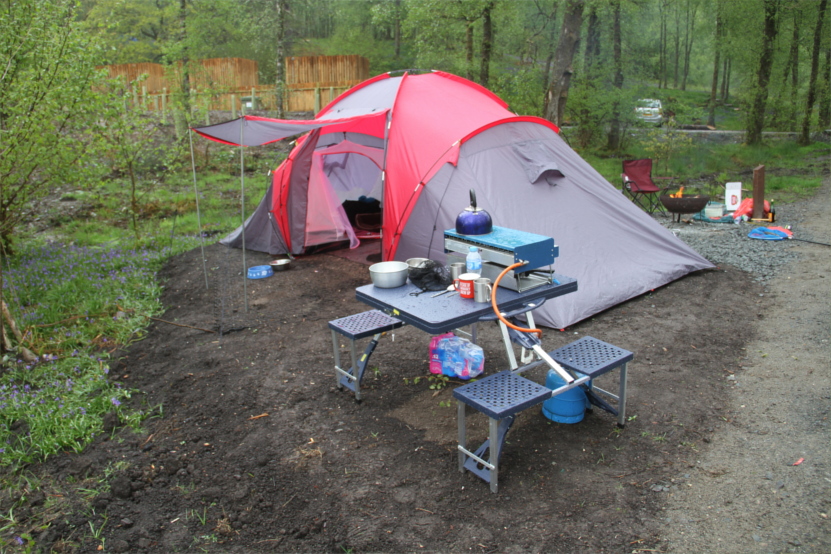
The original state of pitch 8, promoted for disabled use together with pitch 9 due to their accessibility for toilets and car park was disgraceful. (See Video Here) They were built in a water course cut out from a bramble patch on a wet and muddy area prone to flooding. This modified pitch has been created over the top of that area by building it up on a hardcore plinth with soil covering a hexagonal geo-membrane and provides a marked improvement on the old effort in many ways but fails in an important number of others.
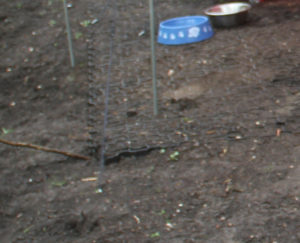
Fail 1:In building up this pitch the edges of the soil should have been constrained to stop any further spread out over the surrounding vegetation. Soil spread is already evident through exposure of the plastic mesh which is creating a trip hazard. Further, the edge of the pitch drops off rapidly close to the tent entrance and again poses a real risk of tripping or falling down the slope.
Fail 2 – as with so many other pitches in this development, this pitch is just too small, for disabled users, some of whom may need a larger tent for access or to take a wheelchair or other aids inside. Here we see a 3 man tent pushed to the back and side edges of the pitch so it will fit and still leave room to get in and out. With table and chairs filling the remainder of the pitch, the fire pan and additional seating have had to go on the path on the other side of the tent. This is effectively the largest tent this pitch will take and even then it is cramped. This makes the pitch useless for a larger tent suitable for families.
Fail 3 – This tent has been erected without the use of guy lines which has only been possible because its a self supporting tent. Of course not using guy lines is unusual as they are important for the stability of the tent structure and a necessity in the wind where damage to the tent and poles can occur if not tensioned properly with the possibility of the tent being blown away. Fitting guy lines at this pitch is problematic due to the hard core path to the side and front of the tent and the area to the back of the tent is the diverted water course making pegging out difficult if not impossible at times.
The other issue of course is that guy lines impede the movement of people around the pitch particularly in the case of a disabled user with a wheel chair.or requiring assistance to get in and out of the tent So the small size of this pitch is of serious concern and brings into questions it’s suitability as a easy access pitch pitch.for disabled users.
Fail 4: It is now well over a month since this “improved pitch surface” was provided to pitches 8 and 9 and they have not been seeded with the recommended seed mix stated in the planning application, This pitch should have a grass surface not dirt. The occupants of the tent in the above image explained heavy rain over night and early morning wet the dirt surface resulting in it being carried into the tent on muddy foot wear.
Pitch 9 as the second pitch assigned for disabled and easy access and is only a little better.
Other than the fact it’s is easier to peg out guy lines as it sits back from the path. The dirt surface remains a problem carrying a muddy mess into the sleeping area in wet weather but has also compressed below the level of the Geo-membrane leaving an unsuitably hard surface for pitching a tent.
Perforation of the tent base is likely while the resultant surface is also very uncomfortable making it both painful to kneel on this surface and creating a risk of physical injury.
As before the pitch is too small for anything more than a three man tent.mitigated some what by the fact there is other ground around for occupants..
This path also fails to comply with the planning consent, the aggregate should not be spread over vegetation and it should be be bounded by a seeded, graded soil bank to allow it to blend in with the land scape.
What needs to be done.
- As a matter of urgency the planning enforcement team need to visit this site and make the applicant comply with the planning consent.
- Complete snagging – the snagging list is sizable.
- Correct water supply as a matter of urgency. The Park Authority need look no further than this simple solution at the Cononish Goldmine supply. A solution they and the planning authority should be aware of as they sanctioned it.

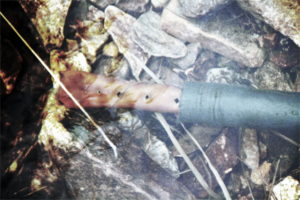 Note also the strainer on the end of the pipe another fiendishly simple solution, a copper stopper pipe with some nail holes. A strainer requires to be fitted at Loch Chon site to avoid future supply failures.
Note also the strainer on the end of the pipe another fiendishly simple solution, a copper stopper pipe with some nail holes. A strainer requires to be fitted at Loch Chon site to avoid future supply failures.
- Urgently correct surface issues on disabled pitches and seed with grass
- Pitch size needs to be increased at many pitches and some surfaces constrained – disabled pitches 8 and 9 are a priority.
- Where pitch size cannot be increased due to poor site selection, an auxiliary area beside the pitch should be created so campsite users can sit and cook by their tents.
This would probably require a new planning application and not be a Non Material Variation - Remove unsuitable pitches from the booking system
- Change booking system and include pitch descriptions and photographs, especially in connection with the size of tent and the number occupants the pitch can accommodate.
- Complete seeding process so recovery of damaged areas can be achieved this season
- Rethink the use of sand as a pitch surface, it’s ridiculous and gets carried into the tent.
- Paths constructed on spongy ground.needs to be dug out and consolidated as per the statement in the planning consent.- 3 locations identified so far.
- Paths need to be brought up to the specification of the planning consent with respect to edge grading and restoration of edges through seeding.
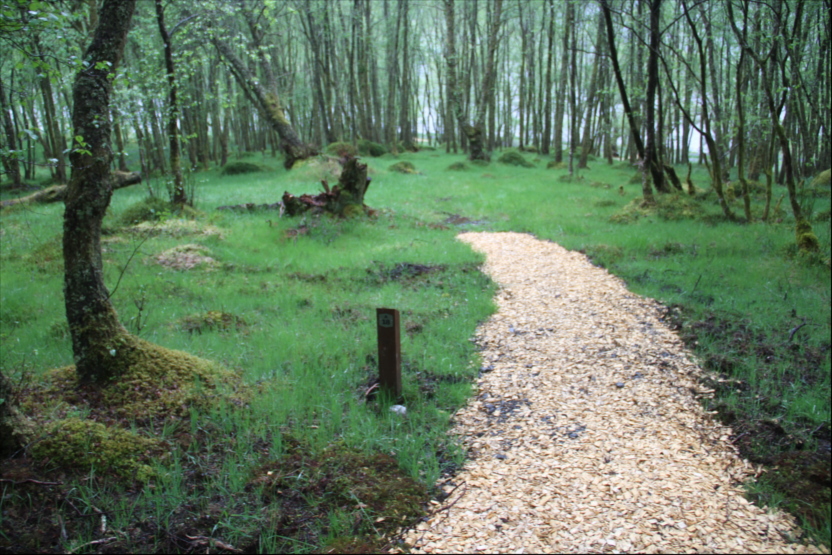
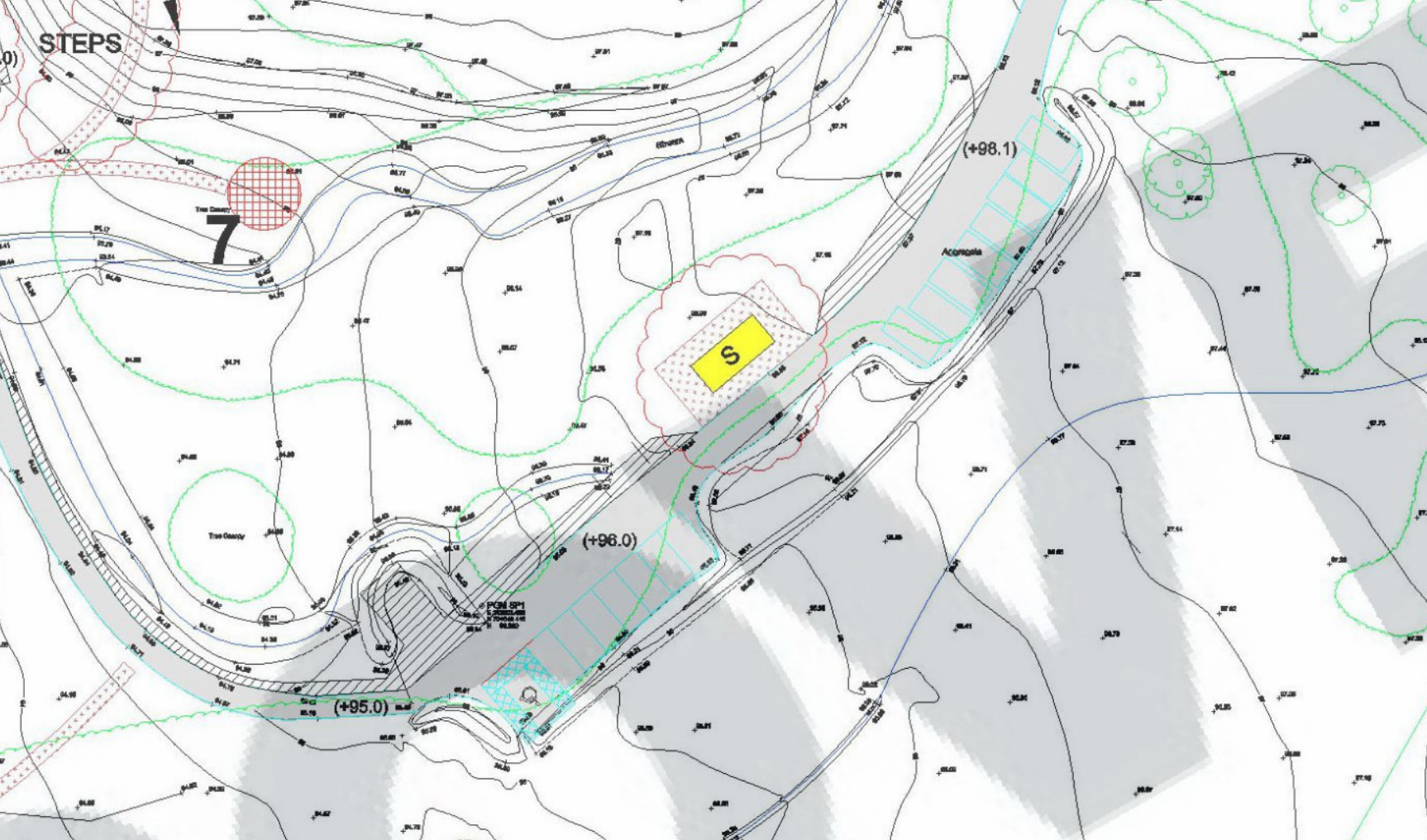
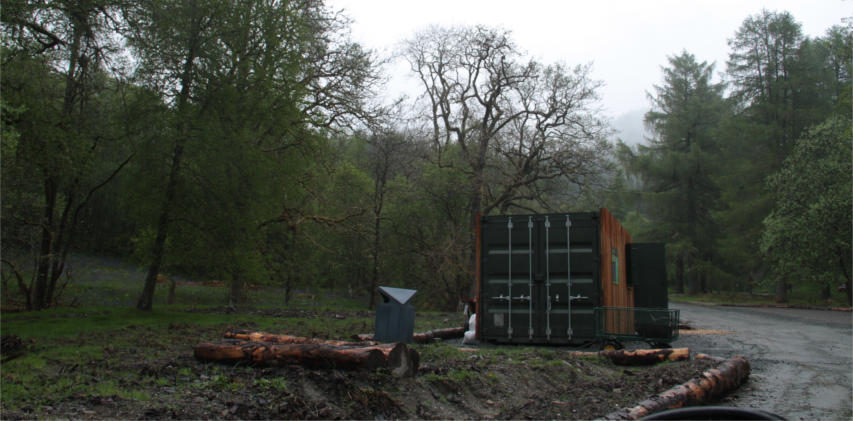

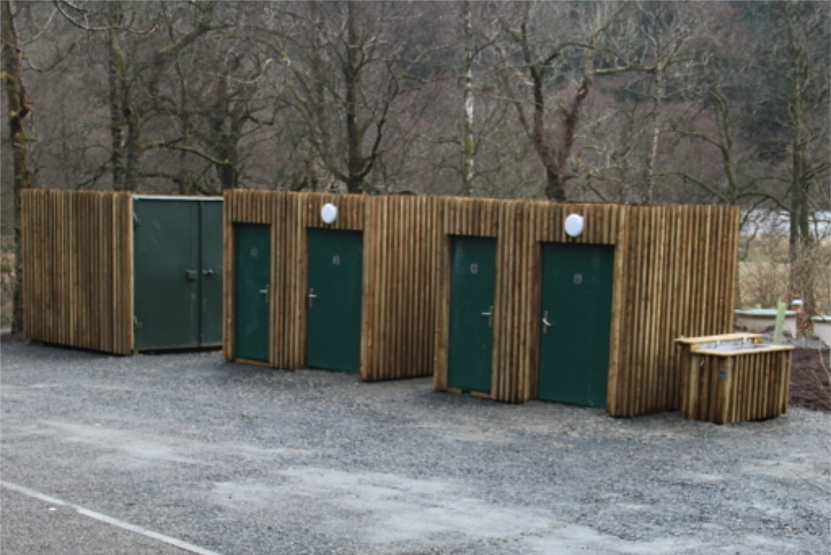

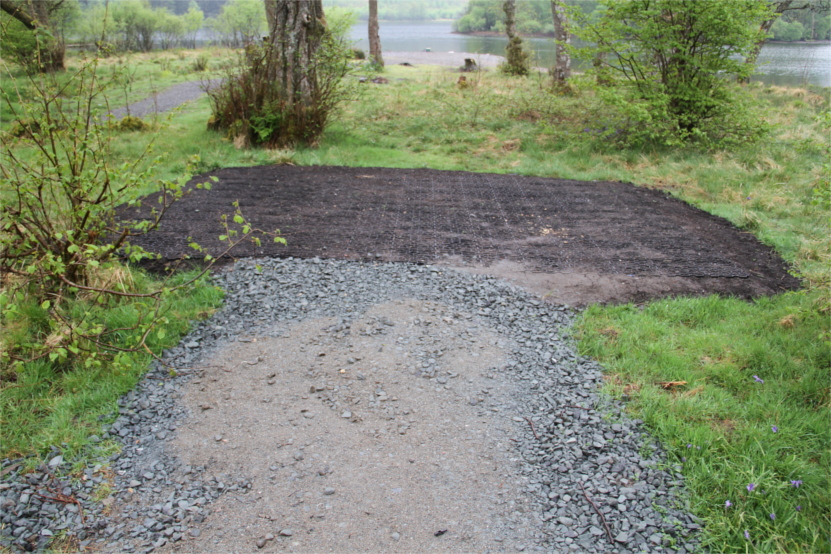
Oh Ross, I’m beyond angry now, I’m reaching that stage of upset that almost conquors the anger.
On every visit I make I’m more and more convinced I’ve stumbled on to a LLTNP storage yard.
If they”had” to destroy what once was then at least they could have made it a showpiece of what could be done and actually worked with the environment to create a beautiful, environmentally friendly, educational space.
Of course, as we know, I wish they’d left it completely alone in the first place.
Her in Australia we have water shortage problems, this is why we hae composting toilets , they do not require water, most park building would have rainwater tanks attached to them for hand/dishes,
drinking water is something you provide for your self in many places here.
In my opinion sometimes the whole idea about camping has gone overboard, people want all the best amenities in the middle of nowhere
David, there was never any demand from the public for flushing toilets at Locb Chon, it was the Park Chief Executive Gordon Watson who maintained composting toilets don’t work in Scotland because its too cold in winter (actually when it warms up again they start functioning again and there are examples in Scotland which work fine) and as a result the LLTNPA had to put in a far more complex and expensive system – which doesn’t work because of the irregular water supply! I have visited Australia, including Myall Lakes, a bit like the Lomond and Trossachs National Park but with far better wildlife, and what struck me is there are small camping places, barbecue spots and composting toilets galore. The contrast with Loch Lomond could not be starker! Do send some photos of Aussie facilities! Nick